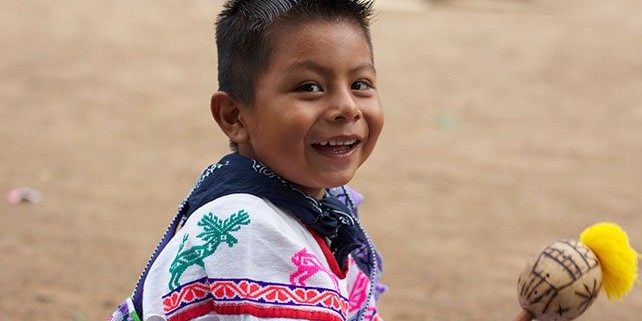Shamanism: The Healing Way of the Heart
For those who are concerned about the growing rift between the human race and the natural world, and the tragedy that results from that rift, shamanism may provide an answer.
Throughout the world, from Tibet to the Southwestern United States, shamans have been involved in healing since the Paleolithic times.
“Perhaps as old as consciousness itself, shamanism is an ancient healing tradition that has reflected the changing cultures of the surrounding world throughout the ages,” according to Brant Secunda, shaman, healer and director of the Dance of the Deer Foundation Center for Shamanic Studies in Santa Cruz, California.
“The shamanic tradition involves healing through personal transformation as well as healing our family, community and environment, he says. “Central to this healing tradition is the belief that we must heal and honor our mother the earth, who is viewed as a living conscious organism. Shamans say this sacred female Goddess, the earth, who nourishes our very existence, must also be nourished with our prayers and ceremonies.”
Secunda is a shaman and ceremonial leader in the Huichol tradition of Mexico. He completed a 12-year apprenticeship with Don José Matsuwa, a renowned shaman who passed away in 1990 at the age of 110. Secunda is the adopted grandson of Don José, and was chosen by his grandfather to take his place in helping to carry on Huichol Shamanism.
“The Huichols of Mexico are said to be the last tribe of North America to have maintained their pre-Columbian traditions, little disturbed by colonization and Christianization until very recently,” Secunda says.
“The Huichols taught me that healing is a way of life, a way of being that permeates our very existence. Healing is something to be practiced constantly, not just when we are ill,” he says. “Moreover, the shamanic tradition of healing does not limit itself to healing of the physical body, but rather involves the maintenance of the harmony and balance of the universe. We must constantly make contact with all life; see our life in all things, so that life and health are embedded within our hearts.
According to the shamanic tradition, all life is interrelated and sacred. Plants, animals, and even rocks have personal identities with whom the shaman develops a personal relationship.
“When a shaman prays, he prays not only for himself but also for his sacred relatives: our mother the earth, our father the sun, our grandfather and giver of light: the fire; our grandmothers, the eagle and the winged ones,” Secunda says. “Don José often told me never to forget that my relatives are the earth, sky, rivers, birds, animals, stones, gems, mountains, caves, springs, and lakes.”
According to various shamanic mythologies there was a time when paradise existed and all life was one. For example, fire communicated freely with people. Now this is lost and for that reason the shaman acts as a bridge, drawing upon lost lines of communication with all life that surrounds him both visibly and invisibly.
In this way, shamans act as intermediaries between people and other life forms. Shamans also have their power to transform themselves into spirit entities and to link others to the spirit world.
As a healing art, shamanism seeks to maintain and/or restore balance, both for individual entities and for the entire planet. All life is ultimately one, according to shamanic belief, and the forces of balance, harmony and intuition must be brought into resonance with one another.
“If we celebrate our life as one with our environment, then our environment will give thanks to us with the proper amount of sunlight and rainfall,” Secunda says.
“Embedded within the traditions of shamanism and healing are techniques of achieving ecstasy. Ecstasy is sought by shamans to experience unity with all things. Ceremonial celebration for the attainment of ecstasy utilizes ancient forms of ceremony and ritual.
The ‘Dance of the Deer’ is an intense sacred dance of the Huichols in which the participants enter into a trance state of joy and ecstasy. The shaman and his assistant chant ancient songs as the others dance about them. “All enter together as one heart into a sacred doorway known to the Huichols as ‘Nierika,’ face of the divine, or link to other realms of consciousness and being.”
At ceremonies the Huichol shaman calls upon his ally or spirit helper, Kauyumari, the magical deer spirit person, to assist him in the task of transporting the ceremonial participants through the Nierika into the realm of ecstatic joy and harmony. “The dancers also assist the shaman as they, like the deer, become messengers of the gods. Through ceremony, participants allow themselves to be transformed, renewed. Life force itself is transmitter in sacred manner.”
Secunda recalls the teachings of Don Jose: “You are an educated person who knows and understands your world,” he says his grandfather told him. “Now you will know our world too and use the two so that modern people may once again know what we have tried never to forget. There is a balance between our two worlds, grandson: that’s the way it is.”
“Is your heart happy?” Don José often asked the children at this rancho in the Mexican Sierra. “Dance with all your heart. We are following the example of the gods and the way they have taught us. This is our life.”
Originally printed in the Sonoran News • written by Gail Dudley


